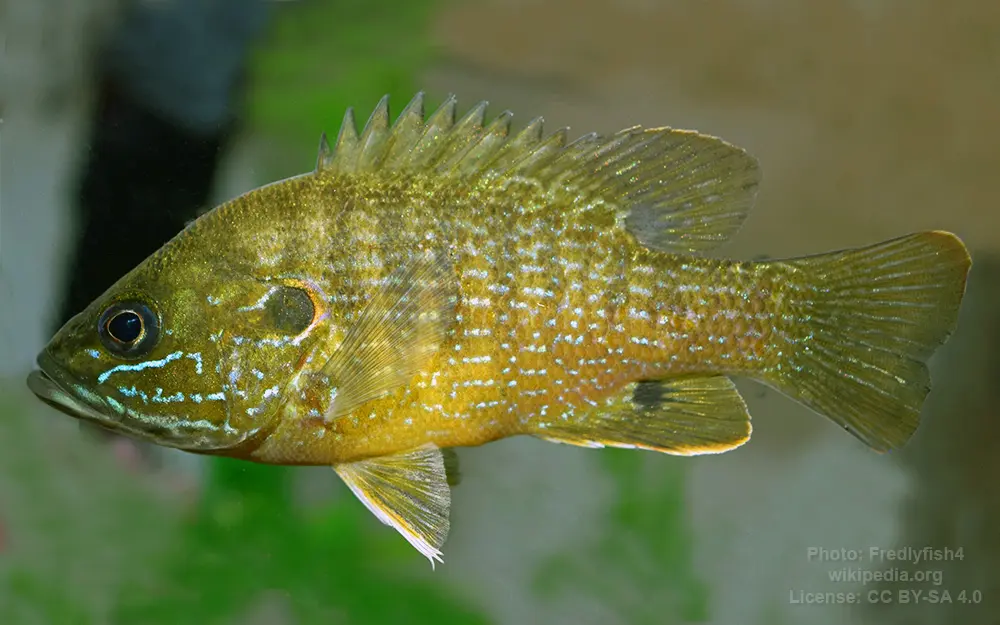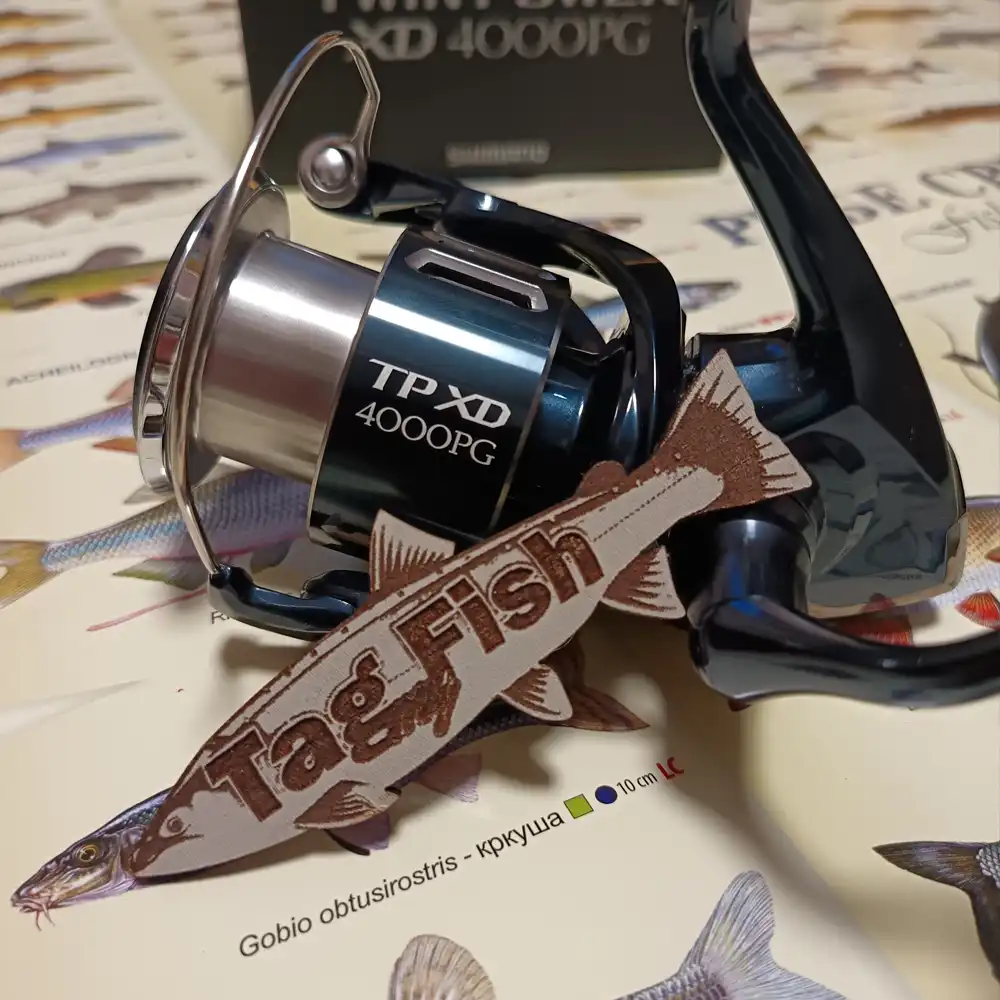Green sunfish (Lepomis cyanellus)

General data
- Main name: Green sunfish
- Climates: Subtropical, Temperate
- Habitat: Freshwater
- Native: North America
- Introduced: Africa, Europe
- Distribution: Klamath River, Delaware River, Savannah river, Nueces River, Lake Washington, Santa Ynez River, View all... Trinity River (Texas), Colorado River (Texas), St. Lawrence River, Mobile River, Chesapeake Bay, Potomac River, Mississippi River
Classification
- Genus: Lepomis - Sunfishes
- Family: Centrarchidae - Sunfishes
- Order: Centrarchiformes - Basses and sunfishes
- Class: Teleostei - Ray-finned fishes
- Superclass: Osteichthyes - Bony fishes
Description
The green sunfish (Lepomis cyanellus) is a species of freshwater fish in the sunfish family (Centrarchidae). A panfish popular with anglers, the green sunfish is also kept as an aquarium fish by hobbyists. They are usually caught by accident, while fishing for other game fish. Green sunfish can be caught with live bait such as nightcrawlers, waxworms, mealworms, and blood worms. Grocery store baits such as pieces of hot dog or corn kernels can even catch fish. Green sunfish are aggressive and will hit small lures. They can be caught with fly fishing tackle. The green sunfish is said to have polarization sensitive vision not found in humans and other vertebrates mostly which helps in enhancement of visibility of target objects in scattering media, using a method called polarization difference imaging. Geographic distribution The green sunfish is native to a wide area of North America east of the Rocky Mountains, from the Hudson Bay basin in Canada, to the Gulf Coast in the United States, and northern Mexico. They are specifically indigenous to a number of lakes and rivers such as the Great Lakes and some of the basins of the Mississippi River. Green sunfish have been introduced to many bodies of water all across the United States, so are frequently encountered. L. cyanellus has been transplanted to many countries in Africa, Asia, and Europe, where it has become established in some. Description The green sunfish is blue-green in color on its back and sides with yellow-flecked bony-ridged (ctenoid) scales, as well as yellow coloration on the ventral sides. The gill covers and sides of head have broken bright blue stripes, causing some to mistakenly confuse them with bluegill. They also have a dark spot located near the back end of the dorsal fin, the bases of the anal fins, and on the ear plate. It has a relatively big mouth and long snout that extends to beneath the middle of the eye. Its pectoral fins are short with rounded edges containing 13-14 pectoral fin rays, a dorsal fin with about 10 dorsal spines and a homocercal tail. The typical length ranges from about 3-7 in and usually weighs less than a pound. The green sunfish reaches a maximum recorded length of about 30 cm (12 in), with a maximum recorded weight of 960 g (2.2 lb). Identification of sunfish species from one another can sometimes be difficult as these species frequently hybridize. Habitat The species prefers areas in sluggish backwaters, lakes, and ponds with gravel, sand, or bedrock bottoms. They also can be found in very muddy waters and are able to tolerate poor water conditions. Green sunfish tend to spend their time hiding around rocks, submerged logs, plants, and other things that provide cover.


